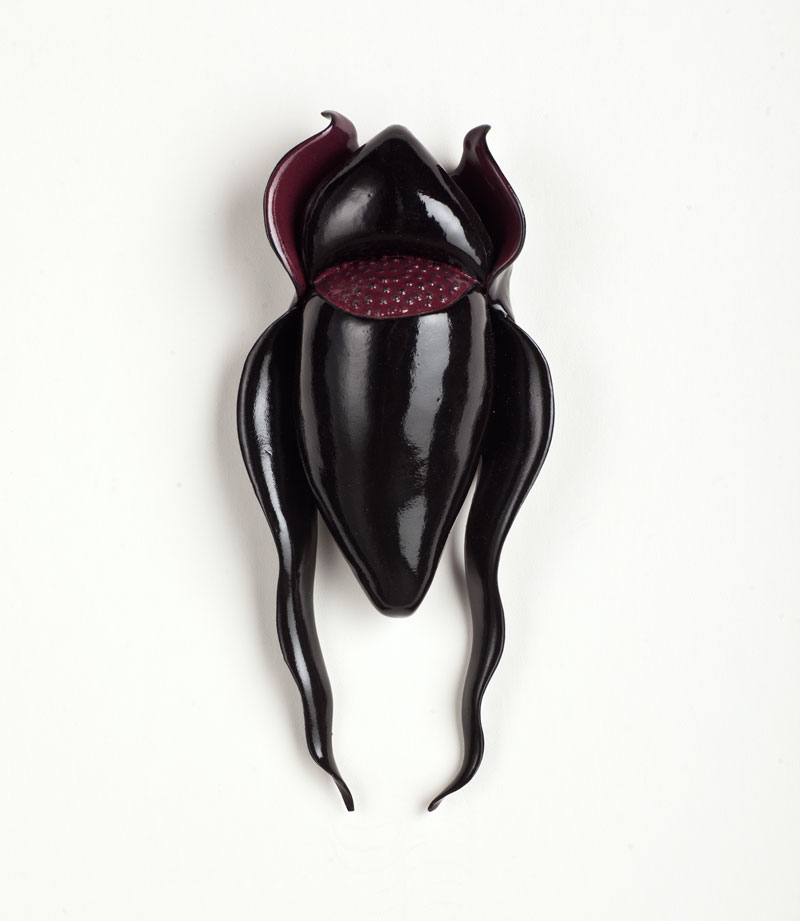
It could be a rogue genetic experiment: a curious flower/beetle hybrid with gloss, black carapace and petal-like pincers. Mauve dimples imply a hidden organ that performs some critical evolutionary function. Its symmetry suggests intelligent design. Its complexity suggests life. This specimen is reassuringly immobile, displayed beneath glass in a mad scientist’s collection, but curiosity compels close examination of its physiology. Is that a protruding wing? Are those labia or labella? Does that orifice ingest or express? On what ancient or future world was this species bred to survive?
In this selection of work by Angela Valamanesh, the 2019 Jam Factory Icon featured in this retrospective survey exhibition, there is an emphasis on the artist’s characteristically playful reimagining of organic forms as serial meditations on animate or inanimate matter, born of the earth. As a body of work, spanning the last two decades, it responds to Valamanesh’s evolution from being a studio potter and substantial engagement with the ceramic medium to embrace broader goals questioning life’s origins inspired by her researches into natural history collections and scientific illustration.
The magic of Valamenesh’s Insect/Orchid ceramic sculptures resides in their believability. These works were inspired by the late-nineteenth-century botanical illustrations of Rosa Fiveash, who collaborated with the orchidologist and physician R. S. Rogers on several volumes about native Australian orchids. Valamanesh discovered these rare folios during a residency at the University of Adelaide’s Barr Smith Library. Valamanesh has reinvented Fiveash’s delicate orchids as oversized biomorphic creatures—part flower, part beetle—like those one might encounter on a bushwalk, or (more horrifically) crawling out from under the bed. There are five specimens displayed, each with varying structures but undeniably kin. While individual features seem familiar, they’re dissonant in combination, evoking the same consternation a scientist must feel when trying to categorise an alien species.
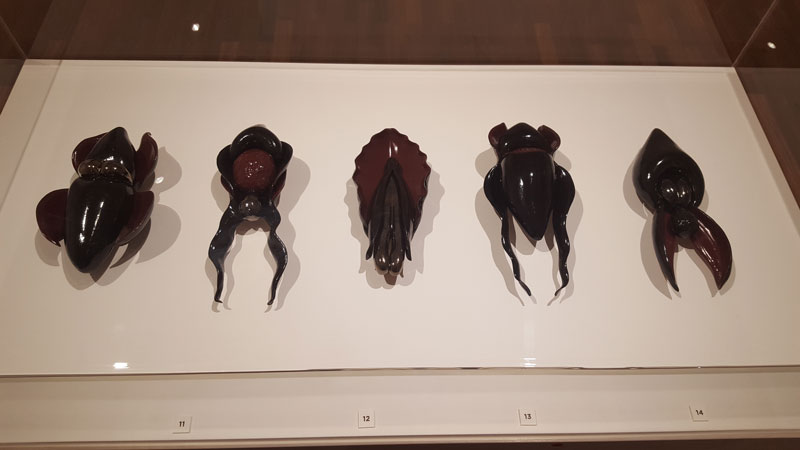
At the time of their creation, the dark tone and gloss glaze of the Insect/Orchid series was a significant departure from the finishes of Valamanesh’s earlier unglazed ceramics in earthy hues responding to the natural colour of her material. Colour theory and finishing techniques are also explored in About Being Here (2000), part of a series that shares its title with the monograph by Cath Kenneally published by Wakefield Press. As Kenneally observed, Valamanesh’s choice of “clay has something crucial to say about being in and of this planet, Earth, as so many human myths reiterate, making siblings of us all, animate or not.”
Valamanesh’s appreciation of the natural qualities of clay is evident in the Natural History Collection series, with her application of subtle hues, considered design and the qualities of an unglazed, textured finish. As an example of this, Natural Histories #D (2008) has two separate components, mounted together on the wall. The first piece is an undulating, elongated form. It resembles the split husk of an acacia pod, its precious seeds spilled over the dry earth. It also resembles the longitudinal bisection of a small intestine, as seen in a school textbook. The second piece is ochre yellow, tracing the outline of vaguely geometric cells. It might represent a porous membrane, the wax honeycomb of a beehive, a cellular sample under a microscope, or all of the above. Valamanesh’s disparate assembly of objects enhances their relationship to each other. There’s great wit in their phallic/yonic properties, also demonstrating her innate intuition for “rightness” in a composition.
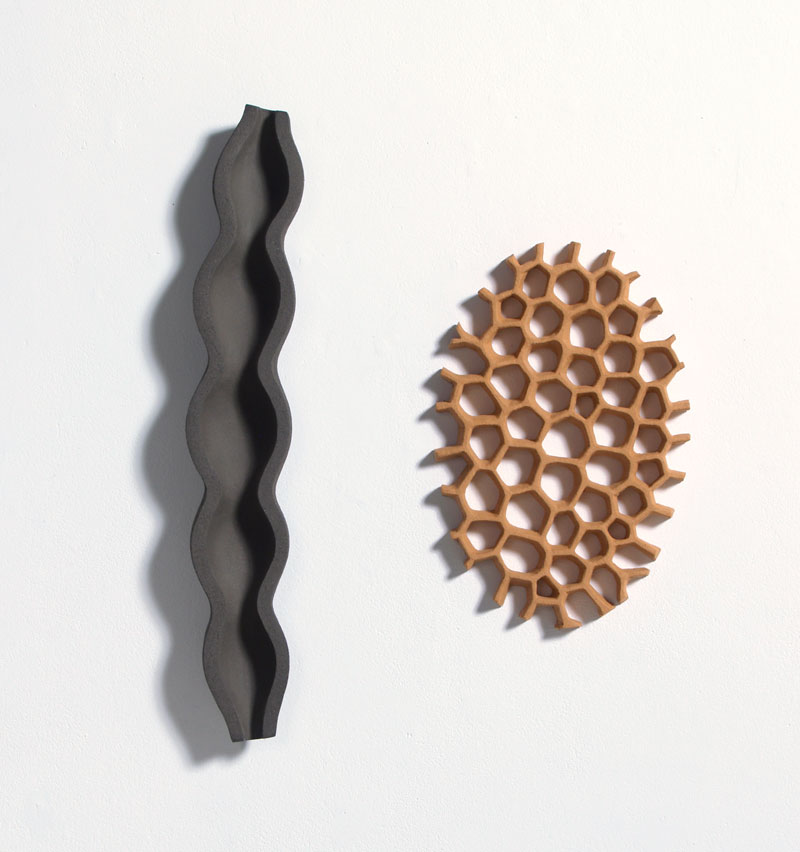
Natural History Collection is one of several series in this exhibition that demonstrates Valamanesh’s interest in the methodical categorisation of scientific collections, and her fascination with the diversity of lifeforms, based on unpacking their constituent parts. Her series accentuates the similarities and differences between each work, assembled in aggregate to convey a collective identity. A Little Bit of Everything (2009) is a memorable, aggregate work. Valamanesh takes inspiration from the scientific use of plaster moulds to record finds for later examination. Stepping away from her earlier predilection for earthy tones and rough texture, she harnesses the fine detail and crisp, white qualities of plaster to make masterful use of negative space. Many of Valamanesh’s previous wall-mounted works involved building up shallow-relief sculptures from simple graphic shapes. Here, in reverse, a row of eleven cuboid works each contain the concave impression of a distinct form, inspired by early illustrations of microscopic organisms.
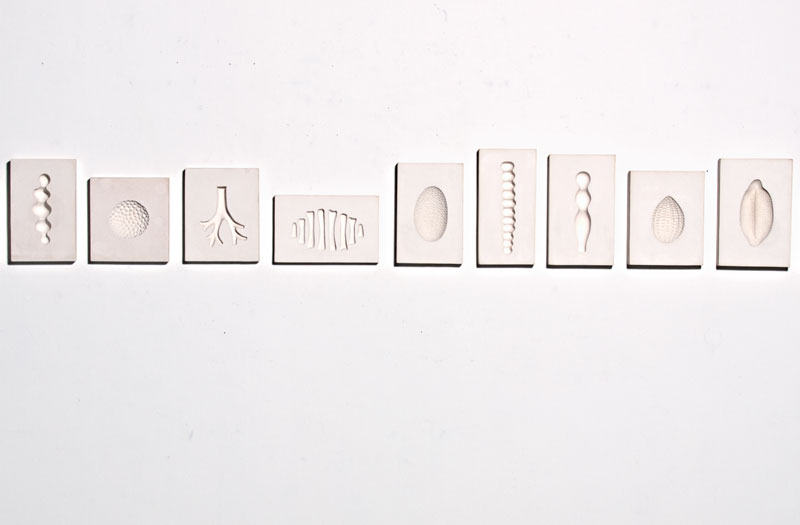
Valamanesh’s love of shape and form is apparent throughout this exhibition. Shapes are repeated again and again, over time and in different series, as individual works and in groups, to revisit their fundamental qualities and properties as essential forms. The biological origin of these shapes is revealed in For a Long While There Were Only Plants (1997), one of the earliest works in the show, created while Valamanesh undertook an MFA at the Glasgow School of Art. Her many watercolour, pen and ink drawings record simple, graphic shapes inspired by anatomical studies. The paper is dipped in wax, giving it a gloss finish and sepia tones, but also referencing wax models used for early anatomical studies. Reappearing forms include an inverted branch from A Little Bit of Everything, the acacia pod from Natural Histories #D; the teeth from For a Long While There Were Only Plants (1997) and the cross-sections that figure in The Anatomy of Plants and Animals No.1 (2013).
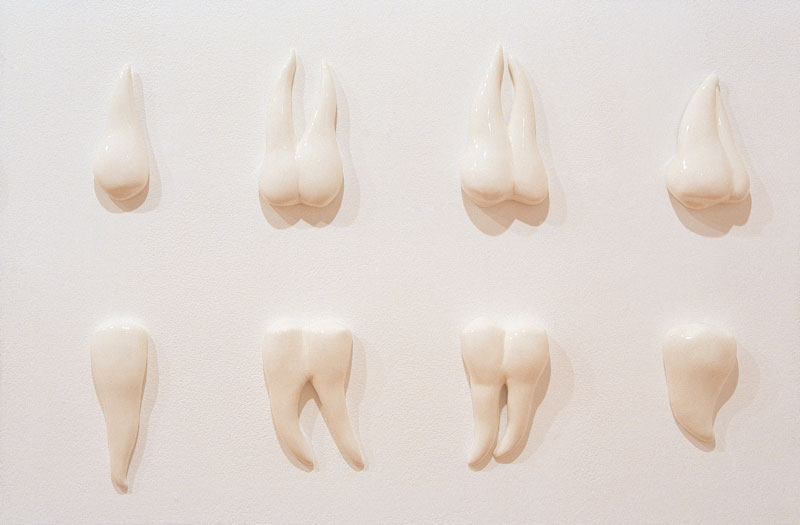
Valamanesh is also comfortable in working at larger scale as she has demonstrated, with her partner Hossein Valamanesh, in the production of works for public sites around Adelaide. Her illustration, painting, fabric and film works expand on her originating vocabulary as a ceramicist. In her watercolour paintings, such as the Observations series (2009–19), Valamanesh embraces the fluidity and unpredictability of the medium to generate nebulous, organic forms. This series, started during her Phd at the University of Adelaide, was inspired by the formative discoveries of early microscopists, botanist Nehemiah Grew and natural philosopher Robert Hooke. The video What Remains (2012), a collaboration with Hossein, is slow-moving, representing the passage of snails and their rippling abdomens, meditatively captured in natural slow-motion. Valamanesh reimagines their wandering path in Pearlex tracings on black felt for What Remains A (2012) and What Remains B (2012), elevating their brief existence and industry.
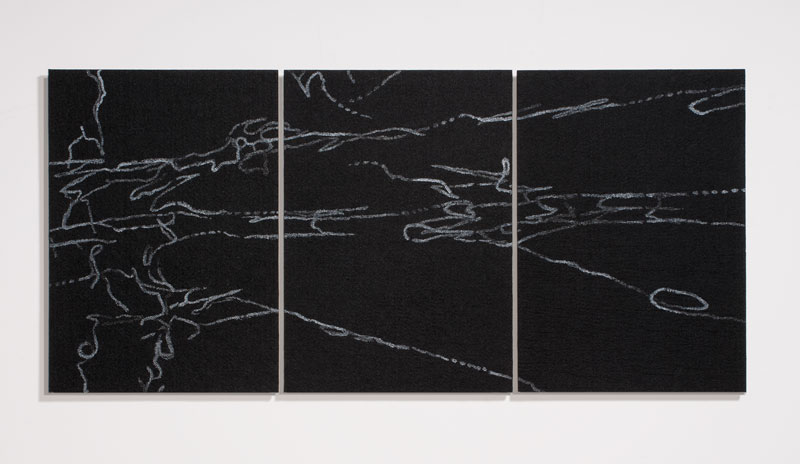
Across the generous selection of works on show here, Valamanesh has finely honed her observation of the natural world and mastered the creation of deceptively simple but compelling essential forms.
